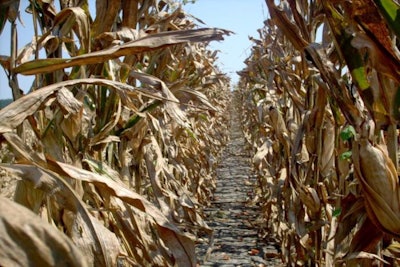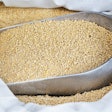
Corn fields across the Midwestern U.S. are being hit with tar spot, a fungal disease that can reduce yield by more than 30 percent.
“It’s in virtually every cornfield in northern Illinois,” said Jim Donnelly, technical agronomist for DeKalb Brand Corn and Asgrow Seed Company, in a report. “It’s worse mostly because of its ability to spread pretty rapidly as well as the fact that the vast majority of hybrids out there are fairly susceptible. That combination has allowed that disease to move and increase very quickly.”
Donnelly said the disease typically reduces yield by about 10 percent, but in extreme cases can cause nearly 50 percent losses.
Tar spot causes small, raised, black, irregular-shaped spots on the leaves of corn plants. The spots are fungal fruiting bodies that release spores to infect the plant.
According to Iowa State University: “As with most diseases, tar spot does have ‘look-a-likes’ – namely, common and southern rust. At the end of the growing season, both rust fungi switch from producing orange-red uredinospores, to black teliospores. Rust pustules filled with teliospores can be mistaken for tar spot ascomata. Remember that rust spores burst through the epidermis and the spores can be scraped away from the pustules with a fingernail. Tar spots cannot be scraped off the leaf tissue.”
The disease originated in Latin America and is believed to have been brought to the U.S. Corn Belt by wind and rain. It was first detected in Illinois and Indiana in 2015, and in Iowa, Michigan and Florida in 2016. It has returned to these and other states in subsequent years, leading researchers to believe it is overwintering in the Midwest.

















